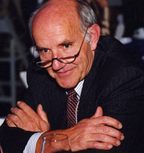Emotions can be “contagious” between individuals, and can affect work group dynamics.
Emotional contagion is characterized by replicating emotions displayed by others.
Contagion differs from compassion, which enables understanding another’s emotional experience without actually feeling it, according to Virginia Commonwealth University’s S. Douglas Pugh.
“Viral emotions” can be transmitted through social media platforms without observing nonverbal cues, according to Facebook’s Adam D. I. Kramer, Jamie E. Guillory of University of California, San Francisco and Cornell University’s Jeffrey T. Hancock.
This suggests that social media can significantly affect workplace interpersonal relations and productivity.
When positive emotional expressions were reduced in Facebook News Feeds, people produced fewer positive posts and more negative posts.
In contrast, when negative emotional expressions were reduced, people reduced negative posts, indicating that others’ emotional expressions influence bystanders’ emotions and behaviors.
People in performance situations are influenced by observing others’ emotions.
When participants witnessed positive emotions in a decision task, they were more likely to cooperate and perform better in groups, found Wharton’s Sigal Barsade.
Individuals who were more influenced by others’ emotions on R. William Doherty’s Emotional Contagion Scale also reported greater:
- Reactivity,
- Emotionality,
- Sensitivity to others,
- Social functioning,
- Self-esteem,
- Emotional empathy.
They also reported lower:
- Alienation,
- Self-assertiveness,
- Emotional stability.
People are more likely to be influenced by others’ emotions when they feel threatened, because this elicits increased affiliation with others, according to Stanley Schachter‘s emotional similarity hypothesis.
Likewise, when people believe that others are threatened, they are more likely to mimic others’ emotions, found Syracuse University’s Brooks B. Gump and James A. Kulik of University of California, San Diego.
Women reported greater contagion of both positive and negative emotions on the Emotional Contagion Scale in research by Doherty with University of Hawaii colleagues Lisa Orimoto, Elaine Hatfield, Janine Hebb, and Theodore M. Singelis of California State University-Chico.
People who are more likely to “catch” emotions from others are also more likely to actually feel emotions associated with facial expressions they display, reported Clark University’s James D. Laird, Tammy Alibozak, Dava Davainis, Katherine Deignan, Katherine Fontanella, Jennifer Hong, Brett Levy, and Christine Pacheco.
This suggests that those with greater susceptibility to emotional contagion are convincing actors – to themselves and others.
Contrary to expectation, people with greater power notice and adopt emotions of people with less power, found University of Hawaii’s Christopher K. Hsee, Hatfield, and John G. Carlson with Claude Chemtob of the U.S. Department of Veterans Affairs.
Participants assumed the role of “teacher” or “learner” to simulate role-based power differentials, then viewed a videotape of a fictitious participant discussing an emotional experience.
Volunteers then described their emotions as they watched the confederate describe a “happiest” and “saddest” life event.
People in higher power roles were more attuned to followers’ emotions than expected.
The service industry capitalizes on emotional contagion by training staff members to model positive emotions to increase customer satisfaction and loyalty.
However, customer satisfaction measures were more influenced by service quality than employees’ positive emotional displays, according to Bowling Green State’s Patricia B. Barger and Alicia A. Grandey of Pennsylvania State University.
Emotions can positively or negatively resonate through work organizations with measurable impact on employee attitude, morale, engagement, customer service, safety, and innovation.
-*How do you intentionally convey emotions to individuals and group members?
-*What strategies do you use to manage susceptibility to “emotional contagion”?
RELATED POSTS:
- Emotional Awareness Enables Focus, Risk-taking Even When “Stressed”
- Body Language Conveys Emotions more Intelligibly than Facial Expressions
- Gender Differences in Emotional Expression: Smiling
- Stress Increases Women’s Performance and Empathic Attunement, but not Men’s
- Expansive Body Language Decreases Power for Some
- Non-Verbal Behaviors that Signal “Charisma”
- When Women Predominate in Groups – Stigma Contagion
©Kathryn Welds





























